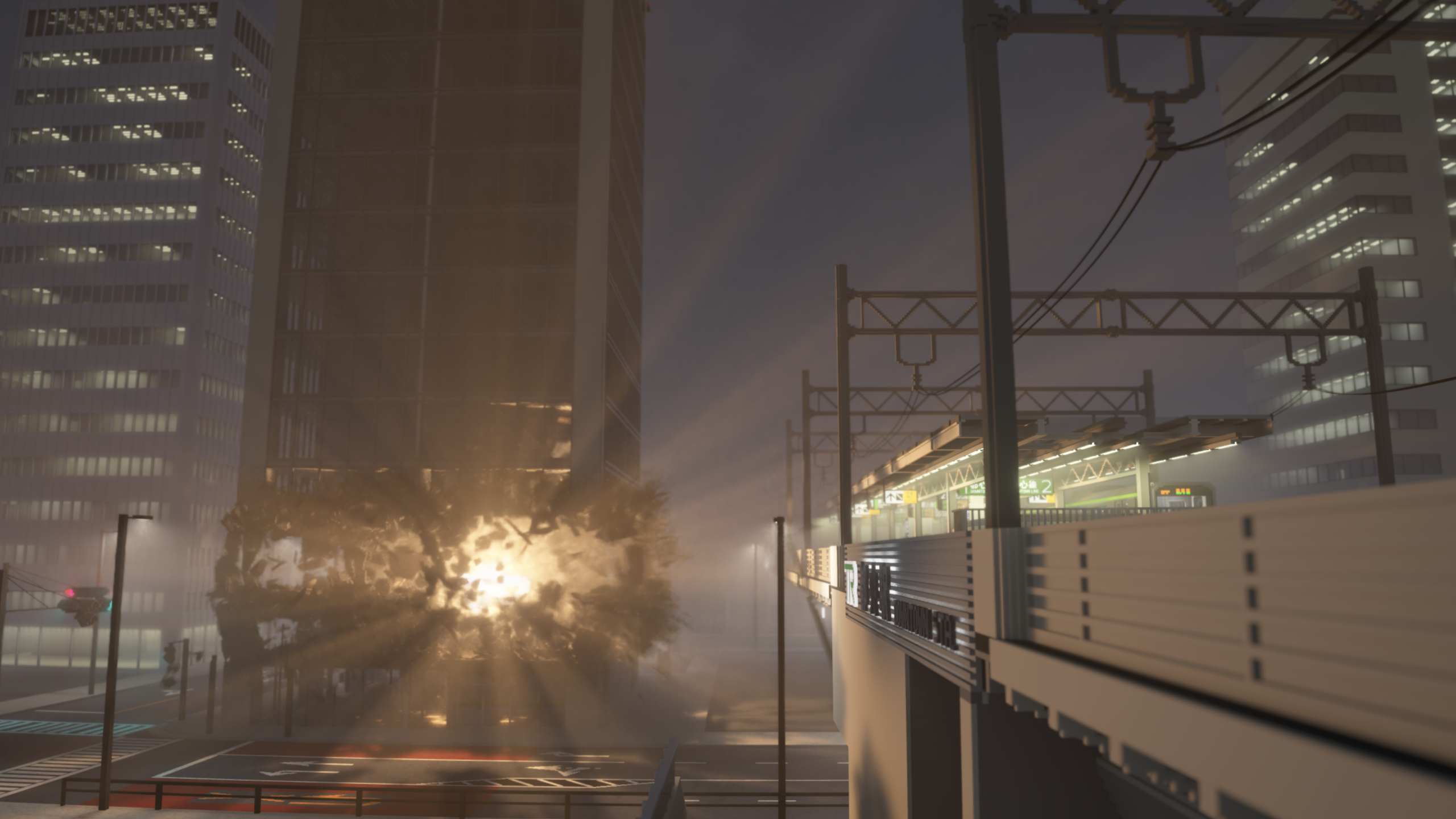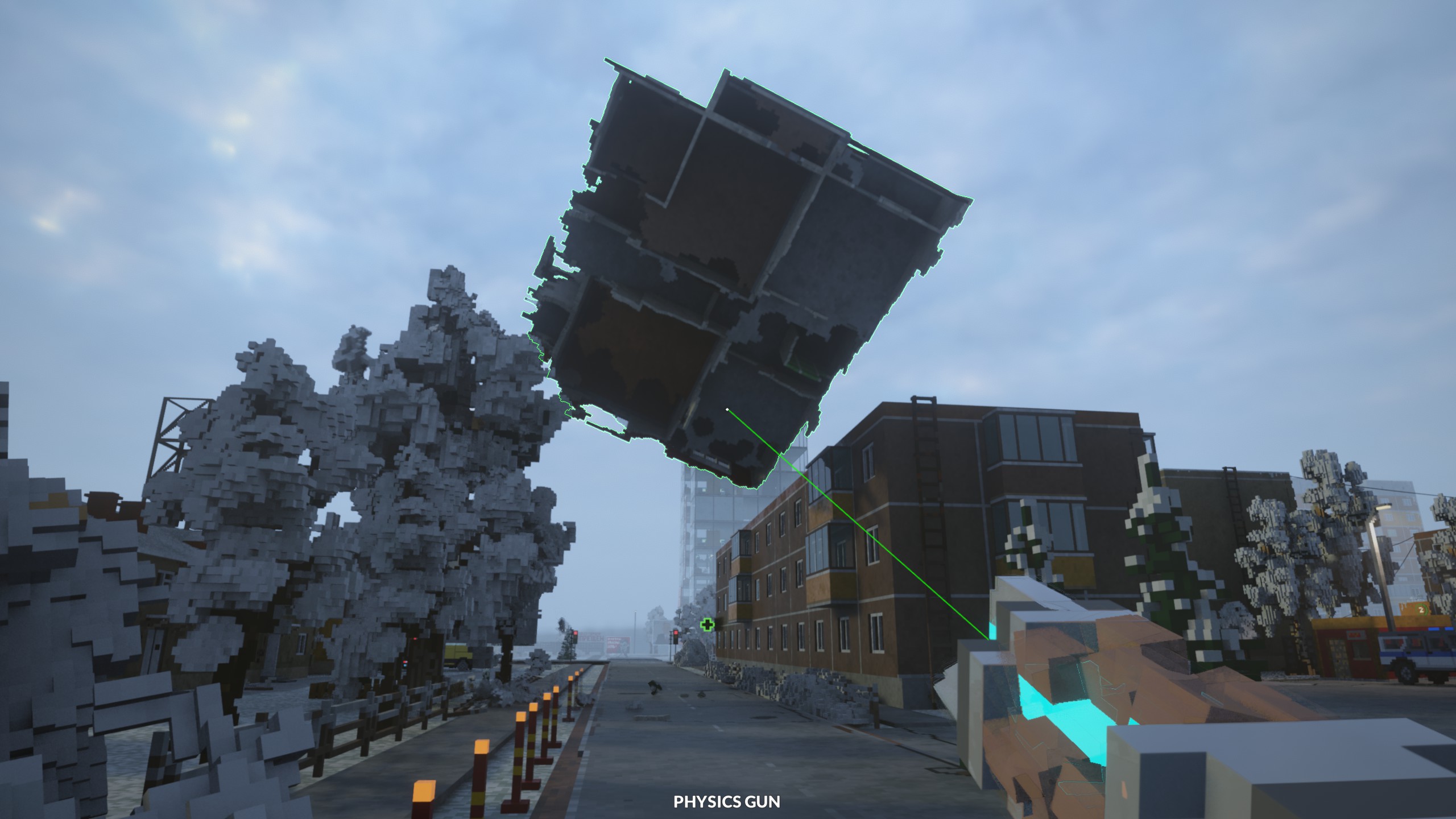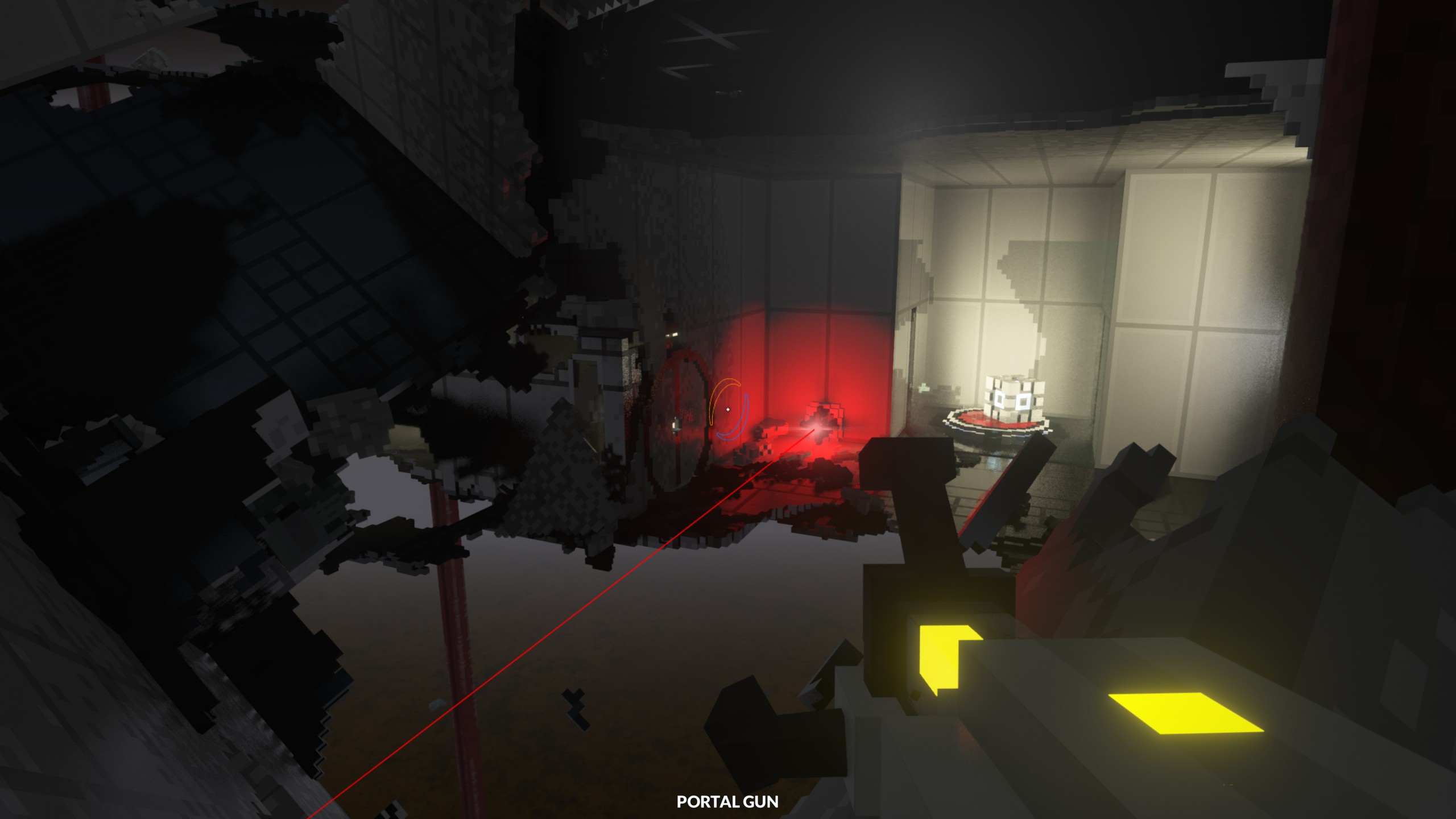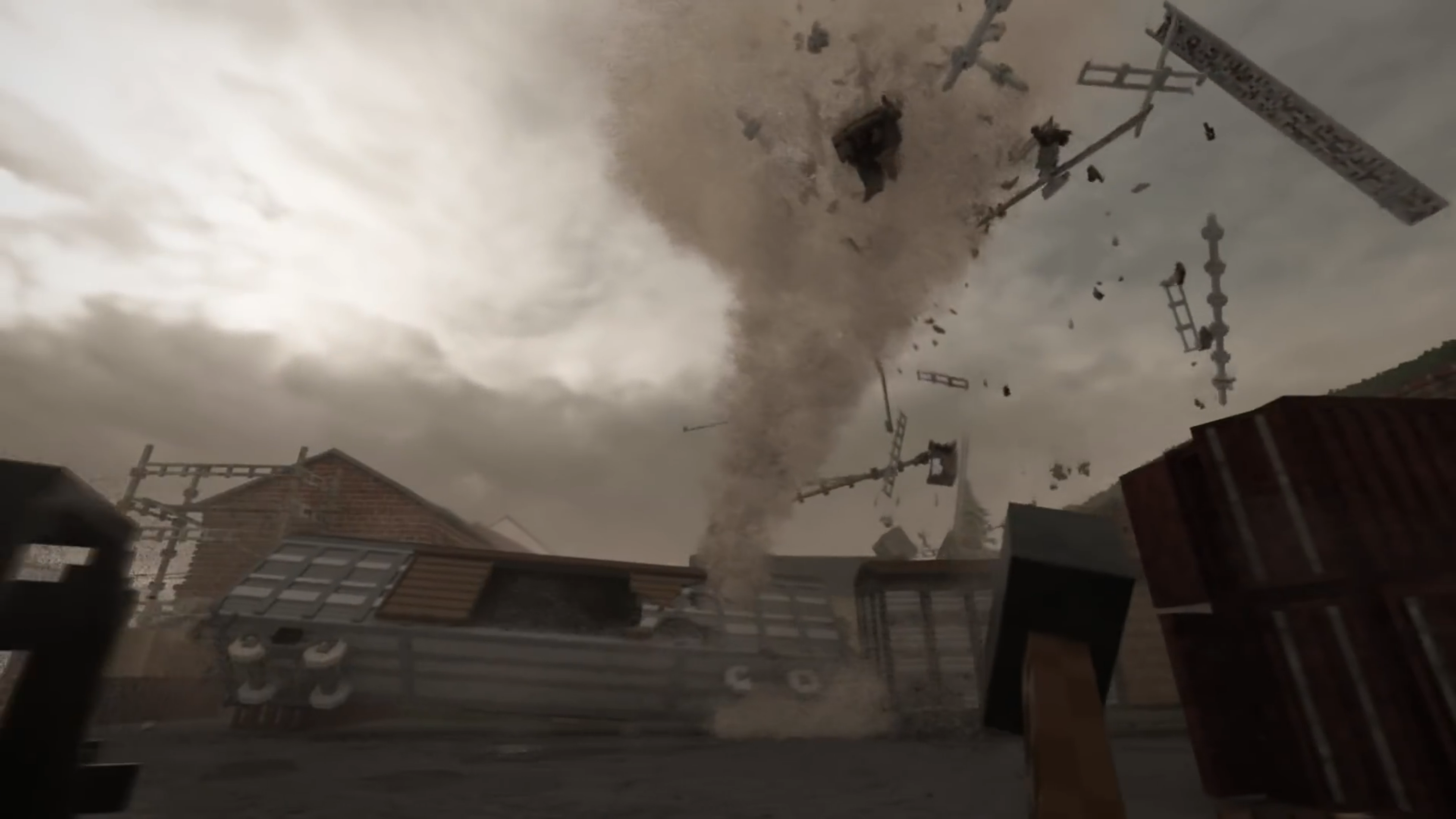Garry's Mod 2 is here, and it's called Teardown
Tuxedo Lab's smash 'em up has become a worthy successor to everyone's favourite physics sandbox.

Teardown is a bloody great heist game. More than just a showcase of developer Dennis Gustaffson's impressive destruction and rendering tech, Teardown masterfully frames that carnage in a series of sledgehammer puzzles—forcing you to use limited tools to carve an optimised path through each stage. December's Part 2 Update went even further, using two new maps to broaden the possibility space of Teardown's heists with killer robots and missions that tap into its dense physics simulations in bold new ways.
Except none of that is why Teardown became a go-to timewaster in 2021. I'm playing Teardown because, thanks to robust mod support, the game transformed into a spiritual successor to Garry's Mod.
Garry's Mod already has a more direct sequel in the works, of course. Dubbed S&box, Facepunch's own follow-up to the physics sandbox is still in early development. But it's been beaten to the punch by Gustaffson's voxel playground, which has seen an explosion in custom content since opening its Steam Workshop back in March.

The comparisons are immediate and stark. Both GMod and Teardown offer a strong base of physics interactions to build from—the former using the Source Engine's then-revolutionary suite to create a canvas of pulleys, switches, thrusters, balloons, and more, transforming Half-Life 2 into a nonsensical playground. Being based on Source also meant that you could pull in assets from almost any Source Engine game, throwing Portal, Left 4 Dead, Counter-Strike and Half-Life characters into a chaotic blender (often literally).
Teardown doesn't have that cross-title support, sure. But what it does have is an absolutely gorgeous destruction model, and the ability to import anything made out of voxels. What this means is that it's relatively simple to slam together a basic map, port it into Teardown, and begin the joyous task of smashing it to pieces. Our own former features lad, Andy Kelly, even noted as much, finding a perverse thrill in knocking down a lovingly crafted noodle bar he'd built in MagicaVoxel.
But Teardown mappers have gotten bloody good at creating new spaces to smash up. They've made expansive Russian towns with fully detailed interiors and urban skyscraper plazas that you can reconfigure by density, flooding, and detail with each refresh. Think miniaturised cities that let you simulate mass destruction, re-creations of classic Counter-Strike maps, and a strangely terrifying pyramid house.

While some of these maps have heists built into them, most are just open sandboxes, waiting for you to go to town with all the tools at your disposal. With the Steam Workshop, that toolbox is constantly expanding beyond the basic sledgehammers and explosives. Why settle for the base game's pistol when you can shred apart skyscrapers with miniguns or melt through steel beams with an industrial incinerator that puts the tiny default blowtorch to shame.
Keep up to date with the most important stories and the best deals, as picked by the PC Gamer team.
The Garry's Mod comparison crystallised after realising the Teardown workshop has a straight-up GMod Physgun, letting you fling entire buildings around your head. There's also the obligatory Portal Gun mod, which even lets you see through your portals (albeit at a dramatically lowered framerate), and an entire set of Aperture-themed test champers to plug your way through.
It works flawlessly, a vision of Portal that comes with the risk of accidentally setting fire to the entire facility. It's just a shame it doesn't come with a fully articulated GLaDOS to take a sledgehammer to. Yet.

And then there are the mods that straight-up reinvent what Teardown can even be. Earlier this year I wrote about Basilisco, a giant horrific snake-bird-robot that relentlessly pursues you through foggy Russian towns while shrieking VHS howls. It's an incredible case for Teardown as a horror game.
Others seek to enhance what they see as the game's shortcomings. Teardown's destruction model is impressive, but it doesn't accurately simulate structural integrity, and there are mods out there that aim to remedy this with hacked-together solutions for making structures crumble and collapse under their own weight. There are vehicle frameworks for creating complex tanks and helicopters.
Tuxedo Labs might be a small team, but it's embraced this scene wholeheartedly, providing example maps and templates to get people started. But more than supporting modders through documentation and test levels, every update has also given modders entirely new avenues to explore.
When Teardown's massive Part 2 update arrived this month, it brought a host of new tools, new maps, and new missions. But it also introduced pathfinding AI to Teardown by way of its killer robots, more physics interactions with elastic cabling, dynamic weather effects like tornadoes and snowstorms, and straight-up GMod-style thrusters to slap on vehicles.

Part 2 will probably be the last major update to Teardown before it leaves Early Access. But it's provided an absolute bounty of tools to set modders loose in spinning Teardown into new directions. Aggressive AI templates mean it's only a matter of time before we see FPS-style horde defense or infiltration missions, and I can only imagine how far the game's physics systems can be reworked and reimagined.
If there's one glaring omission, it's that Teardown lacks any form of multiplayer. Yes, adding multiplayer in a game that wasn't built for it is a behemoth task, but it's all too easy to imagine the kinds of impromptu gametypes that could spring up with such a delightfully breakable foundation.
Still, Teardown has that same thrill of jumping on each morning to see what new locations have popped up in the Steam workshop—and what new toys I can download to break them apart with. Tuxedo Labs might be close to done with its physics sandbox, but I suspect I'll be finding new ways to tear down Teardown for a long time.

20 years ago, Nat played Jet Set Radio Future for the first time, and she's not stopped thinking about games since. Joining PC Gamer in 2020, she comes from three years of freelance reporting at Rock Paper Shotgun, Waypoint, VG247 and more. Embedded in the European indie scene and a part-time game developer herself, Nat is always looking for a new curiosity to scream about—whether it's the next best indie darling, or simply someone modding a Scotmid into Black Mesa. She also unofficially appears in Apex Legends under the pseudonym Horizon.

